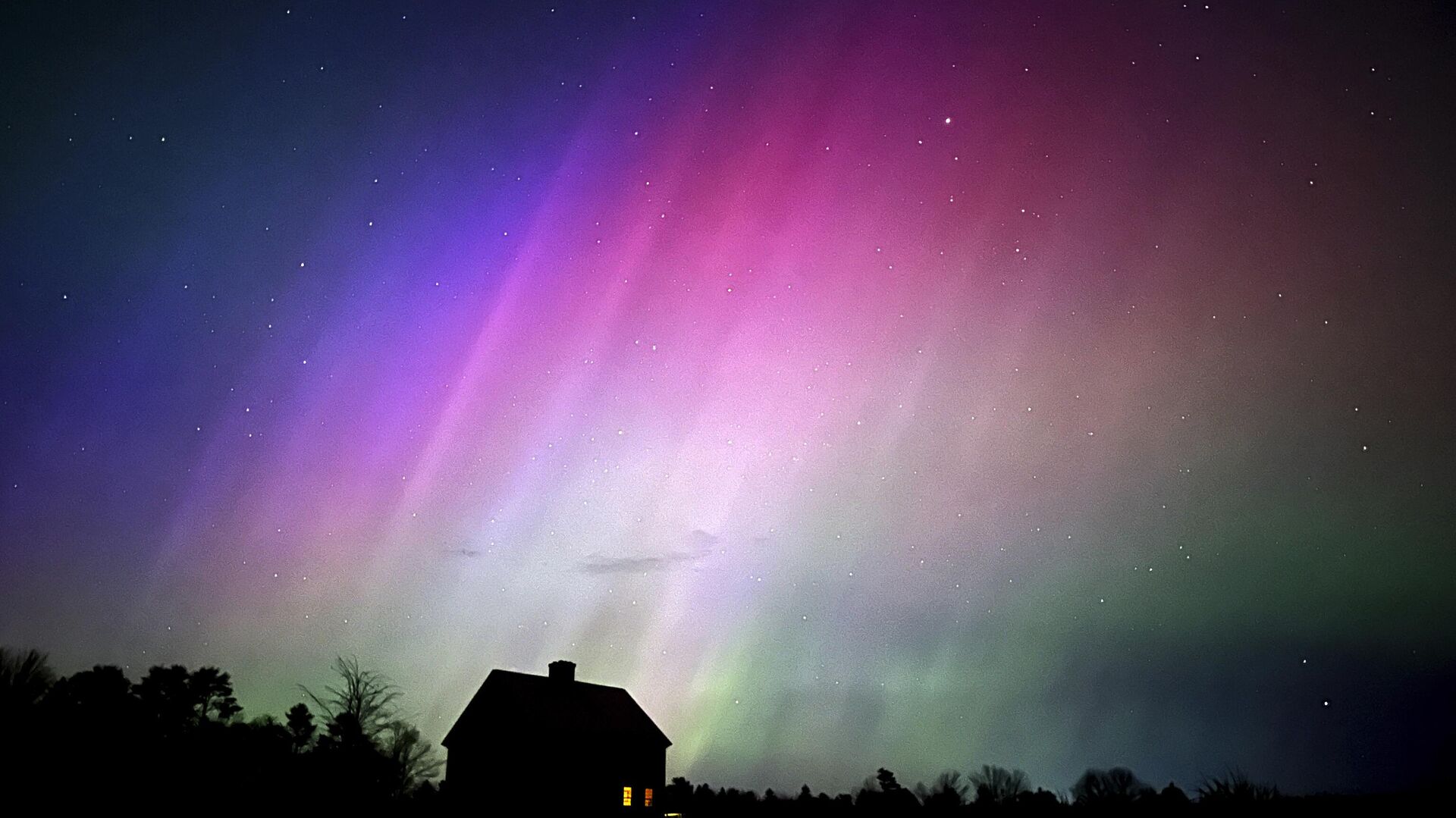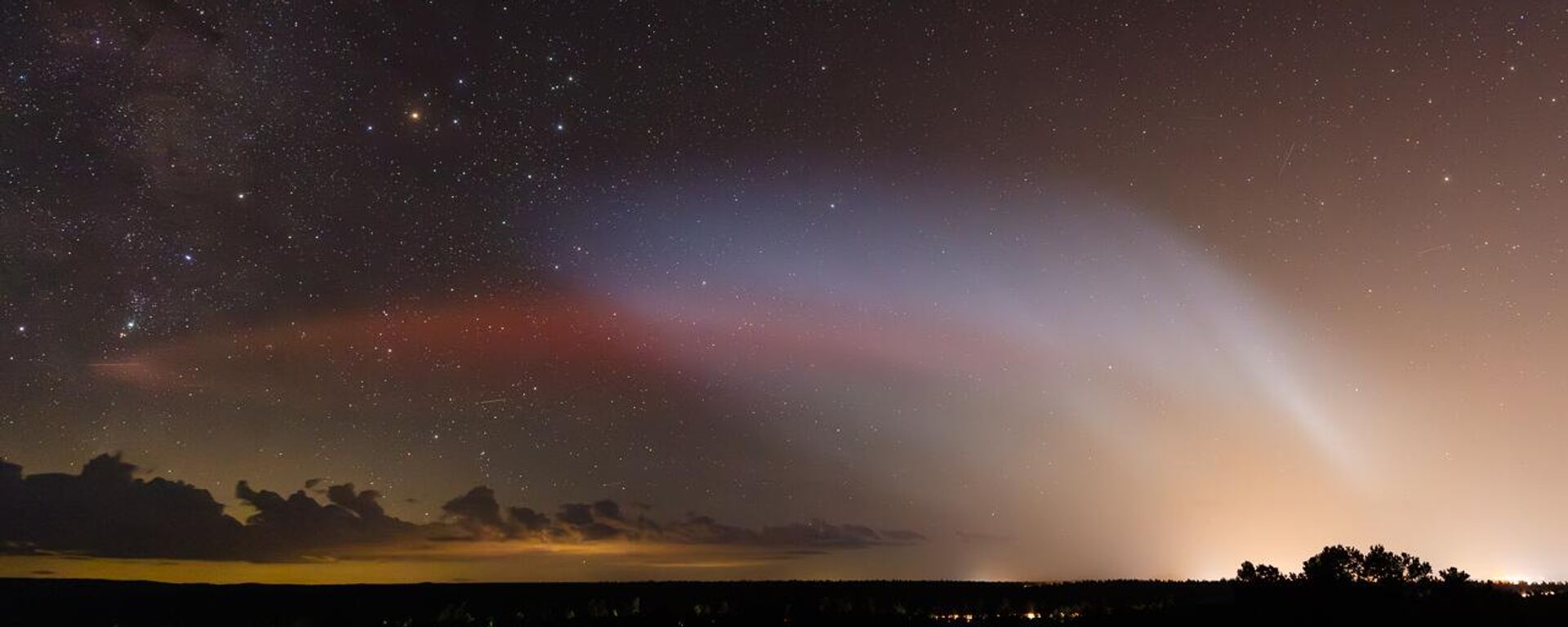Stunning Northern Lights Display in US, Canada Following Rare Solar Eruption

© AP Photo / Robert F. Bukaty
Subscribe
A powerful solar storm previously created spectacular and rare celestial light shows in the skies of the US, UK and Russia in May.
Auroras will light the night sky in the US this weekend following a “cannibal” coronal mass ejection that hit Earth on Tuesday. The National Oceanic and Atmospheric (NOAA) Space Weather Prediction Center (SWPC) issued a geomagnetic storm warning for August 3 and August 4, although the celestial show could be visible past August.
The lights were forecasted to reach farther south than is normal and may be visible in parts of the US including the states of Washington, Idaho, Montana, North and South Dakota, Minnesota, Wisconsin, Michigan, New York and Maine, said the SWPC.
Here is an animation of the last 24 hours of #NorthernLights forecasts for North America.
— Grand Forks, ND Sky Color (@gfndskycolor) August 5, 2024
Images from NOAA Space Weather Prediction Center#Space #Aurora #SWPC #NOAA pic.twitter.com/zJEy8qOV4e
The aurora borealis dazzled in the sky over northern Michigan on Wednesday. https://t.co/5XdLcIr0vS pic.twitter.com/PLSTXvjyVw
— ABC News (@ABC) August 5, 2024
At the same time, much more intense auroral displays will be visible in northern Canada and Alaska.
Scientists have forecasted more displays of the Northern Lights for the month of August, and even the months to follow, after it was discovered that there were more sunspots on the sun this July than any other time since December 2001. According to NASA, sunspots (magnetic disturbances on the sun’s surface) have been counted every day since 1611 to determine how magnetically active the sun is.
Aurora borealis could be seen in New York, Idaho https://t.co/2ZOhKmMLZa
— Newsfinale Journal (@NewsfinalePub) August 4, 2024
Today's weather photos are a look at the beautiful #Auroraborealis over Piper's Lagoon #YCD very early this morning. I'll have your #BCday forecast on @CHEK_News at 5.☀️
— Tess van Straaten (@tessvanstraaten) August 4, 2024
📷Julie Boyer@CHEK_media #ShareYourWeather pic.twitter.com/AtnEdQdDAI
The celestial show that will be lighting up Earth's skies is caused by a coronal mass ejection (CME) that is associated with a powerful solar flare that erupted from the sun on August 1, Space.com explained.
CMEs carry electrically charged atoms known as ions and when they collide with Earth’s magnetosphere they can cause geomagnetic storms. The ions will interact with gasses in Earth’s atmosphere and emit energy which takes on the form of light, and this light is what we know as aurora borealis, or aurora australis in the Southern Hemisphere.


